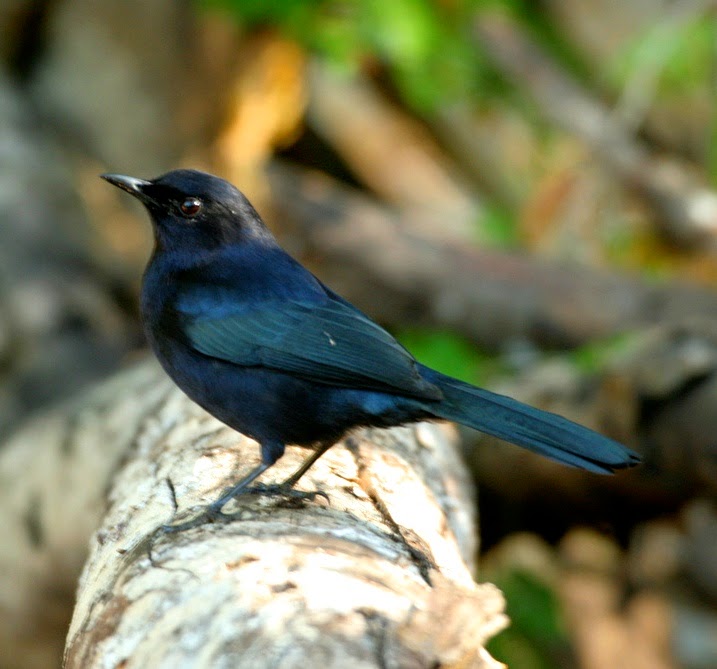 |
| (Photo from Flickr) |
Common name:
black catbird (en); sabiá-preto (pt); moqueur noir (fr); maullador negro (es); glanzkatzenvogel (de)
Taxonomy:
Order Passeriformes
Family Mimidae
Range:
This species is found on the Yucatán Peninsula, in south-eastern Mexico, northern Belize and northern Guatemala.
Size:
These birds are 19-20,5 cm long and weigh 32-42 g.
Habitat:
The black catbird is mostly found in dry scrublands and humid to semi-arid scrubby woodlands and forests. They also use forest edges, second growths and mangroves.
Diet:
During the breeding season they feed mainly on insects and other arthropods, while fruits such as Ficus, Solanum, Metopium and other are more important outside the breeding season.
Breeding:
Black catbirds breed in May-August. The nest is built by both sexes, consisting of an open cup made of twigs and dry leaves, and lined with finer materials. It is placed in a small tree or scrub, about 2 m above the ground. The female lays 2-3 greenish-blue eggs, which she incubates alone for about 17 days. The chicks are fed by both parents and fledge 12-13 days after hatching.
Conservation:
IUCN status – NT (Near-Threatened)
This species has a relatively small breeding range and a global population estimated at 20.000-50.000 individuals. the population is believed to be declining at a moderately rapid rate, owing to habitat loss and fragmentation due to tourist development and conversion to coconut plantations. Hurricanes may also affect this species, particularly if their frequency and intensity increases.







